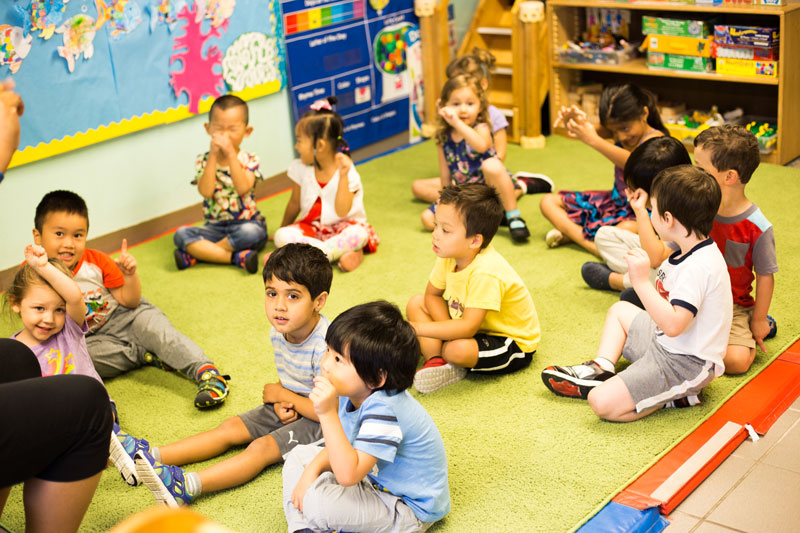

Children’s Learning Centers grant has had huge impact over past four years
COVID hit many University of Houston students hard. Emotionally and financially, the pandemic has taken its toll on the community, and students who are also parents were no exception.
Cyndi Castro saw her graduate stipend reduced and was working a part-time internship to help support her family while she earned her doctoral degree in the Civil Engineering program. With her family’s income limited, Castro needed to find affordable childcare for her son so she could finish her degree.
That’s when the UH Children’s Learning Centers came through. Castro, who graduates in December 2021, qualified for daycare tuition assistance at the Children’s Learning Centers, funded by a federal grant, that has helped low-income UH parents continue their education by helping provide affordable childcare.
Called the Child Care Means Parents in School Program (CCAMPIS), the grant pays up to 70 percent of costs for children at UH’s childcare centers, giving a big boost to UH students whose children are enrolled at the Children’s Learning Centers. Castro credits the CCAMPIS grant with allowing her to “overwhelmingly succeed in my research goals.”
“Knowing that my son was well-cared for, I was able to focus all of my energy during childcare hours into my studies,” Castro said. “I not only was able to graduate a semester early, I also was provided the time to work on a nationally-competitive grant for postdoctoral studies.”
The Children’s Learning Centers is in the last year of this four-year grant, which was highly competitive to receive — UH was just one of 10 colleges and universities in Texas who received this funding in 2018’s grant competition. The grant, which totaled $2.2 million over four years from the U.S. Department of Education, helped alleviate the financial burden on UH parents who may have had to choose between school, work or childcare.
The Children’s Learning Centers’ current grant funding began in 2018 and runs through September 30, 2022, although it has received CCAMPIS funding dating back to 2002, when Director Jennifer Skopal first started at the centers. Skopal is hopeful UH will be awarded funding through this grant again when applications open up for the next funding cycle in Spring 2022. The impact on students has been immeasurable, Skopal said.
“It has been a wonderful experience supporting our student parents in this way,” Skopal said. “Knowing that we are not only making a difference in children’s lives, but their parents as well really speaks to the impact we are having across generations.”
Over the past four years, 84 UH parents have been awarded assistance through the grant for 88 children.
The Children’s Learning Centers isn’t just convenient for UH parents, it’s also an affordable option for childcare. Student-parents are charged less than staff and faculty to enroll their children, and it’s so popular on campus that it has a waitlist.
The centers, which has been open on UH’s campus for nearly 50 years, has grown over the years and expanded its classrooms. Today, it has two locations on campus that can care for a combined 221 children from three months to five years old. Teachers in the centers provide developmentally appropriate activities and a learning environment that fosters respect for cultural diversity. Students, staff, faculty and alumni can apply to enroll their children in the centers, which boasts a small teacher to student ratio, and a Spanish language immersion program.
The importance of the centers to UH parents came into remarkable focus this past spring, when Winter Storm Uri caused widespread property damage. The Centers’ Wheeler location shut down after burst sprinklers and pipes caused extensive water damage in the lobby and seven of nine classrooms to sheetrock, carpet, ceilings, cabinets and counters.
It took weeks to repair and left dozens of parents scrambling to find alternative childcare for their toddlers and preschoolers until Campus Recreation offered a temporary solution. Centers staff and UH facilities turned unused racquetball and squash courts and multipurpose rooms into eight full functional classrooms.
At the time, Dr. Sanda Zalman, associate professor and program director of art history in the Kathrine G. McGovern College of the Arts, said the shutdown, albeit temporary, really showed how much the on-campus daycare impacts parents at UH.
“Not only is it important for raising the next generation of Cougars, it is vital to the University’s mission,” she said. “Without the Center functioning, faculty, staff, students and alums who are parents simply cannot undertake the work necessary to achieving the University’s Research 1 goals.”
Before she enrolled her son at the Children’s Learning Centers, Castro had been relying on a state-funded daycare voucher for families of first responders. This center, she said, was a drop-in facility and did not have consistent staffing or curriculum for the children. “My son would scream every time we pulled into the parking lot,” she said. “It was awful. My heart could not handle continuing to bring him there, and I could only do this for a few months.”
Castro’s son has been enrolled in the UH daycare since September 2019, and he “immediately took to the teachers. I could tell he was much calmer, adjusting, trusting, and genuinely enjoyed going to school each day. His language skills are astounding, and he comes home from school learning new things each day that leave us in awe. I fully attribute this to the exceptional care and engagement he receives at the Children’s Learning Centers. This emotional and mental relief, not to mention the physical help of having someone watch your child when you are trying to study, was literally life giving.”
Castro has received a prestigious National Science Foundation postdoctoral fellowship to work at the University of Illinois, Urbana-Champaign.
“I plan to keep my son enrolled at the Children’s Learning Centers during the first few months of the transition, and we are looking forward to a spot opening at the UIUC on-campus childcare center long-term,” she said. “Having realized the immense quality of such a program for my son’s development, I will ensure he receives ongoing schooling of a similar caliber. The CCAMPIS award and the wonderful staff at the Children’s Learning Centers showed me the benefits of a high-quality childcare environment for my family well-being, and for that, I am immensely grateful.”

